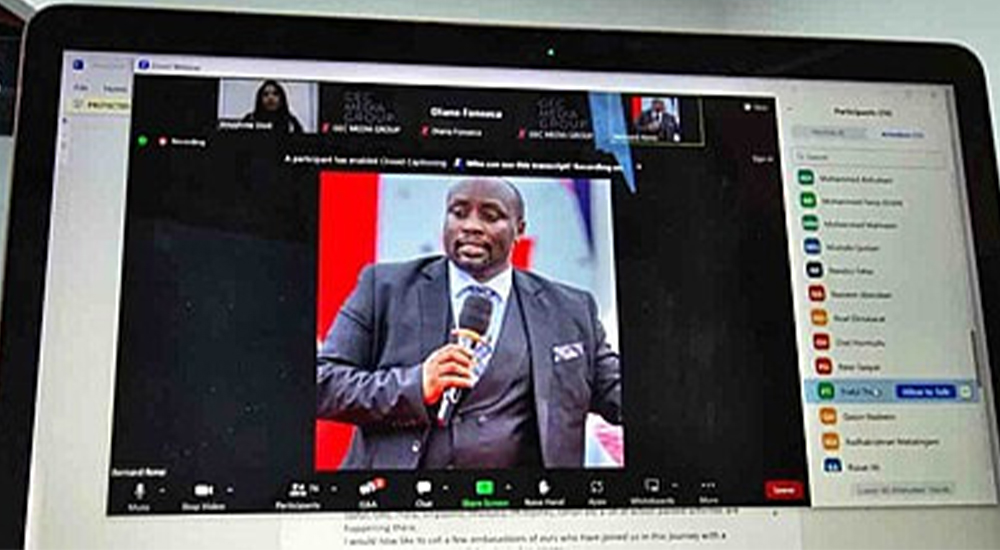As you might expect in such a nascent and rapidly evolving area of technology, most organisations are still at the very earliest stages of their journey to full-stack observability. The latest report from AppDynamics, The Journey to Observability, reveals that a large majority of technologists across the Emirates continue to rely on multiple, disconnected tools to monitor IT availability and performance across the IT stack.
And while these current solutions are doing an important job in allowing technologists to identify issues and take appropriate action within a specific domain, the lack of connection and interoperability between these tools means that IT teams simply cannot understand dependencies up and down the IT stack.
Greater visibility into IT availability means not having to spend time trying to identify anomalies
However, while it may sound like this report paints a gloomy picture, the reality is quite the opposite. UAE technologists have made fantastic progress with their plans for full-stack observability over the past 12 months and the vast majority are feeling incredibly optimistic about what they can deliver in 2022.
2021, the year that full-stack observability truly took off
Perhaps the biggest accomplishment of the past 12 months is the fact that more than half 55% of UAE businesses have now started out on the journey to full-stack observability, and another 38% are planning to do so in the next 12 months. That means that a staggering 93% of regional organisations will be somewhere along the journey to full-stack observability during 2022.
Having more unified data is also enabling closer collaboration between teams
After a great deal of discussion about the need for technologists to have greater visibility into availability and performance across their IT estates over recent years, 2021 was the year that the talk turned to action. Technologists across all sectors have been building out their monitoring capabilities and bringing together existing tools to generate a more consolidated view on IT availability and performance across their IT environment.
The arguments for full-stack observability are widely understood. Increased complexity of IT infrastructure, soaring customer expectations for exceptional digital experiences, and heightened concerns about the potential impact of an IT outage are all reinforcing the urgent need for technologists to have a unified view on IT availability and performance across their IT environments.
Added to this, an increase in the deployment of microservices and container solutions has highlighted the need for technologists to be able to monitor cloud native environments alongside legacy on-premises architecture.
Full-stack observability provides technologists with unified, real-time visibility into availability and performance up and down the IT stack for compute, storage, network and public internet, from customer facing applications through to back-end infrastructure.
They are finding time to take a step back and think strategically
It enables IT operations teams to quickly and easily identify anomalies, understand dependencies and fix issues before they impact the end user. And when this performance data is linked to business metrics, technologists can assess issues and prioritise their actions based on business impact.
Importantly, the research suggests that the need for this type of observability is now being understood beyond the confines of the IT department. 96% of technologists state that appetite for full-stack observability within their organisation has increased over the last 12 months. And remarkably, almost all 99% UAE technologists report that the wider business has been supportive of their efforts to implement full-stack observability, in terms of providing the necessary budget and resources.
Encouragingly, technologists are reporting some very good results from their efforts over the past year. 94% of UAE technologists delivered some level of improved visibility across their IT stack in 2021. And within these organisations that have made progress, technologists are able to point to a broad range of benefits.
For a start, greater visibility into IT availability and performance means that technologists are not having to spend so much time trying to identify anomalies and understand dependencies up and down the IT stack. This is boosting productivity and reducing operational costs in the IT department. Having more unified data is also enabling closer collaboration between teams.
Technologists are starting to escape constant firefighting of trying to identify and fix performance issues
But perhaps the biggest benefit, certainly for regional technologists that have been working long hours under relentless pressure throughout the pandemic, is the fact that they are starting to escape the constant firefighting of trying to identify and fix performance issues before they impact end users. All of a sudden, they are finding time to take a step back and think strategically; they are beginning to focus on more fulfilling, higher-value work that can really drive the innovation agenda and deliver competitive advantage for their organisations.
Technologists primed to realise their full-stack observability vision
On the back of these positive results, technologists across the Emirates are feeling positive about their progress to date and confident about what they can achieve in 2022. They recognise that the transition to full-stack observability is a complex, multi-stage journey that takes time and sustained effort, and they are aware that there is still work to be done.
However, there is a widespread feeling that the momentum organisations have built up over the last 12 months can catapult them forward into 2022 and beyond. 95% of UAE technologists report some level of confidence that their organisation will reach its full-stack observability goals in 2022.
What the progress of the last 12 months has done more than anything else is give technologists, and wider business stakeholders, a glimpse of what true full-stack observability will bring to their organisations. They are seeing how unified, real-time visibility into IT availability and performance can be a springboard for delivering market-leading digital experiences and creating true differentiation in a digital world.
They are beginning to focus on higher-value work that can drive the innovation agenda
Regional technologists see 2022 as a pivotal year in their transition to full-stack observability and they are excited about the impact they can have. Indeed, they feel the shift to full-stack observability will be transformational for their business.
Organisations may still only be taking their first steps on the journey to full-stack observability, but they are determined to claim the game-changing benefits that await them when they reach their final destination.
The accomplishment of the past 12 months is the fact that more than 55% of UAE businesses have started out on the journey to full-stack observability.




